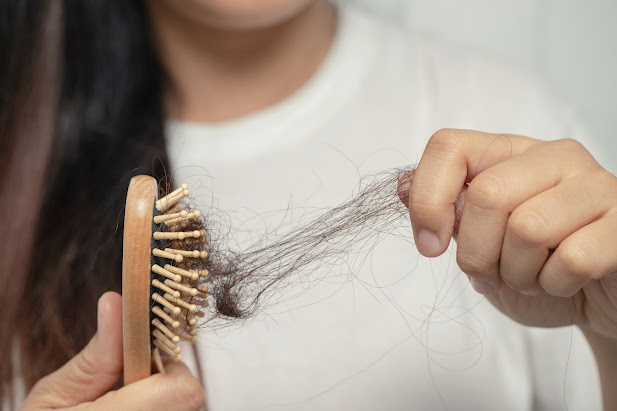Best Hair Loss Treatment Options to Regrow Your Hair
Hair loss is a common issue affecting millions of people worldwide, impacting self-esteem and confidence. Fortunately, advancements in treatments provide numerous options to help stimulate hair regrowth and slow down hair thinning. Whether hair loss is due to genetics, hormonal changes, stress, or other factors, exploring effective treatment methods can make a significant difference. This article highlights the best hair loss treatment options available today to help you regain a fuller head of hair.
Understanding the Causes of Hair Loss:
Before Hair Loss Treatment in Dubai (علاج تساقط الشعر في دبي), it’s essential to understand why hair loss occurs. The most common cause is androgenetic alopecia, also known as male or female pattern baldness, which is genetically driven. Other causes include hormonal imbalances, nutritional deficiencies, medical conditions like thyroid disorders, stress, and certain medications. Identifying the underlying cause helps in selecting the most appropriate treatment strategy, whether it’s topical, oral, or procedural.
Topical Treatments for Hair Regrowth:
One of the most accessible and popular hair loss treatments is the use of topical solutions. These treatments are applied directly to the scalp and work by stimulating hair follicles or slowing hair loss. Minoxidil is a well-known topical agent that promotes blood circulation to hair follicles, encouraging new hair growth. It is available over the counter and suits both men and women. Consistency in application is key, as results often appear after several months of regular use. Additionally, natural topical remedies such as essential oils (like rosemary or peppermint oil) have shown promising effects in improving scalp health and encouraging hair growth.
Oral Medications to Combat Hair Loss:
Oral medications can offer a systemic approach to hair loss treatment by targeting hormonal imbalances or other internal factors contributing to thinning hair. Finasteride, for example, is commonly used to reduce the production of dihydrotestosterone (DHT), a hormone responsible for shrinking hair follicles in androgenetic alopecia. By blocking DHT, it helps slow hair loss and may promote regrowth. Other supplements, such as biotin, zinc, and vitamins D and E, can improve hair strength and overall scalp health. It’s important to follow recommended usage and monitor for any side effects when using oral medications.
Advanced Laser Therapy:
Low-Level Laser Therapy (LLLT) is a non-invasive treatment that uses red light wavelengths to stimulate hair follicles and increase cell metabolism. This method enhances blood flow to the scalp, encourages follicle regeneration, and promotes thicker, healthier hair growth. LLLT devices, such as laser combs, caps, or helmets, can be used at home or in professional settings. Many users report positive results after consistent use, with minimal side effects. It is a safe and painless option suitable for various types of hair loss, often used in combination with other treatments.
Platelet-Rich Plasma (PRP) Therapy:
PRP therapy is a cutting-edge treatment that utilizes the patient’s own blood to stimulate hair growth naturally. The process involves drawing blood, concentrating the platelets rich in growth factors, and injecting this plasma into the scalp. The growth factors help repair damaged hair follicles and encourage new hair production. PRP is gaining popularity due to its natural approach and effectiveness in treating androgenetic alopecia and other hair thinning conditions. Typically, multiple sessions are needed for optimal results, and it can be combined with other hair restoration therapies.
Lifestyle and Nutritional Support:
While medical treatments are effective, lifestyle and nutrition play a critical role in maintaining healthy hair. Stress reduction techniques such as meditation, yoga, or regular exercise can help minimize hair loss linked to stress. A balanced diet rich in proteins, vitamins, and minerals is vital for hair follicle health. Foods containing omega-3 fatty acids, iron, and antioxidants support scalp health and hair strength. Avoiding harsh hair care practices, excessive heat styling, and chemical treatments can also protect hair from damage and breakage, improving the overall appearance and health of hair.
Choosing the Right Treatment Plan:
Finding the best hair loss treatment involves patience and sometimes a combination of approaches. Starting with less invasive options like topical treatments and lifestyle changes can be effective for mild to moderate hair thinning. For more advanced hair loss, oral medications, laser therapy, or PRP might be necessary. Regular monitoring of progress and adjusting treatments based on response helps maximize results. Consulting with a hair care specialist or dermatologist can provide personalized guidance tailored to your hair loss pattern and lifestyle, ensuring a strategic approach to regrowth.
Conclusion:
Hair loss can be a challenging experience, but with the variety of effective treatment options available today, regrowing your hair and restoring confidence is possible. From topical solutions and oral medications to advanced therapies like laser treatment and PRP, there is a method suited for different types and stages of hair loss. Coupling these treatments with healthy lifestyle choices and proper nutrition enhances the chances of success. Remember, consistency and patience are key, as hair regrowth takes time. By choosing the right combination of treatments tailored to your needs, you can take meaningful steps toward healthier, fuller hair.




Comments
Post a Comment